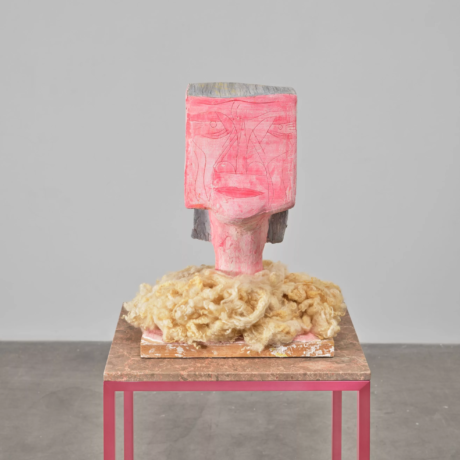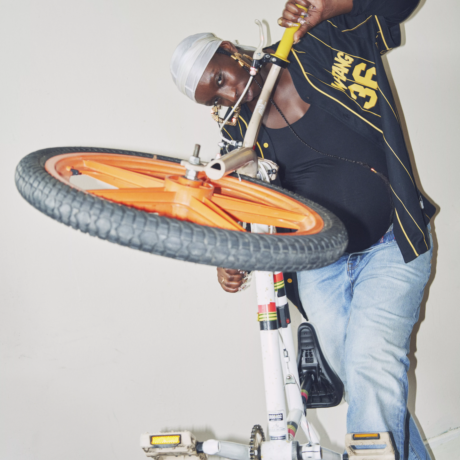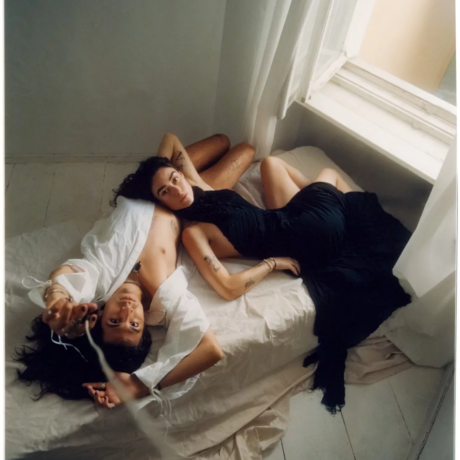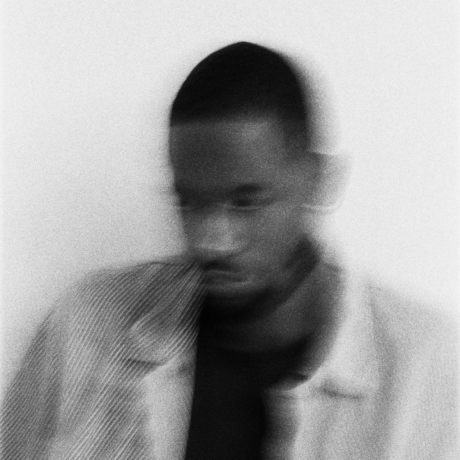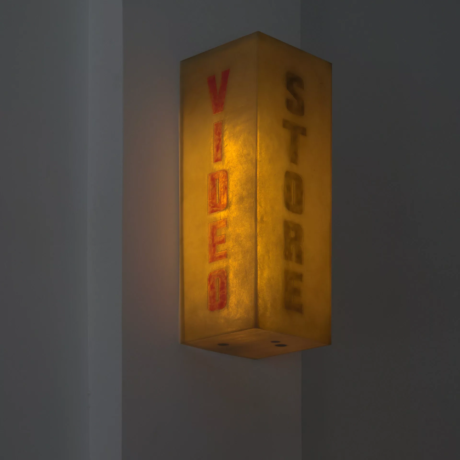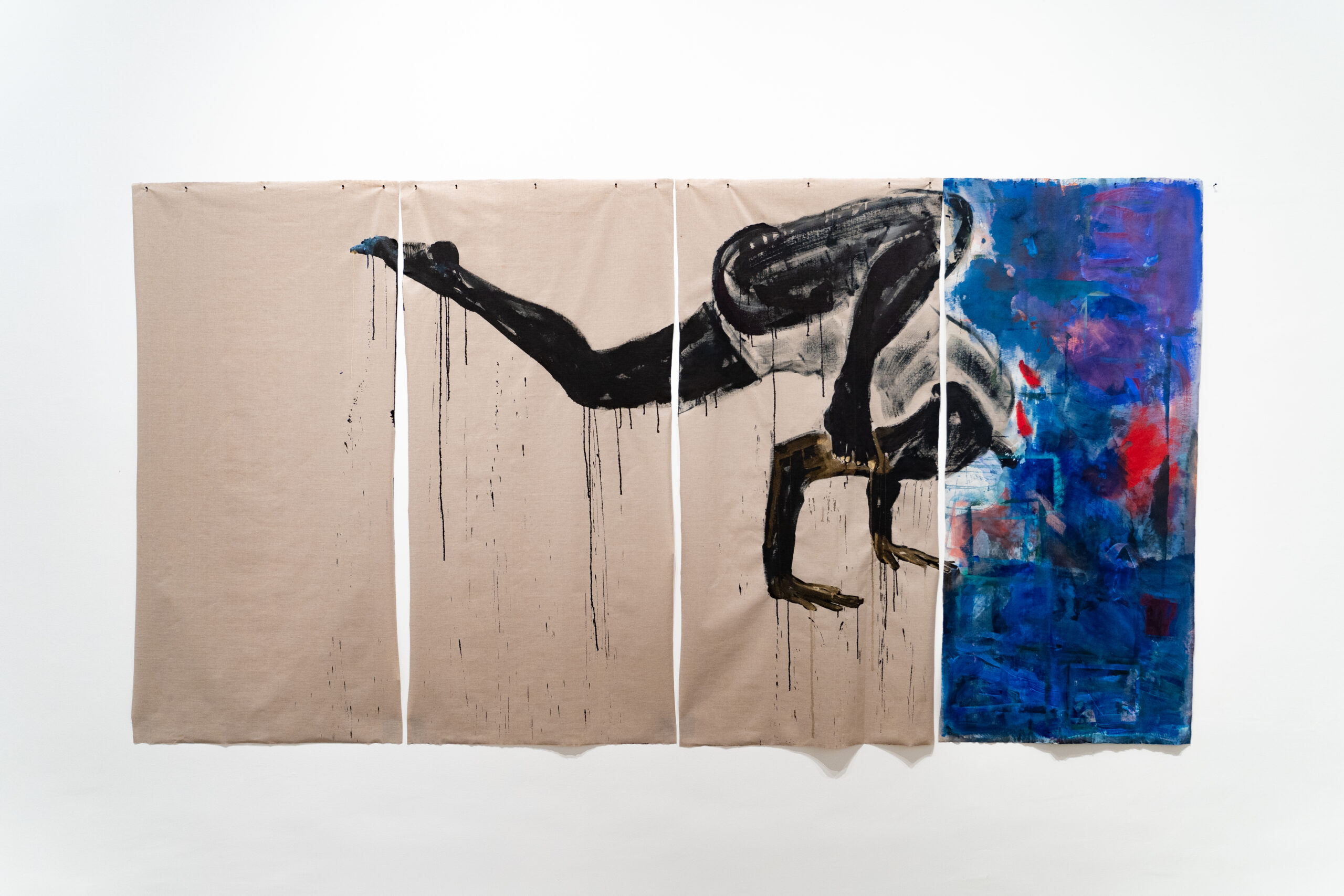
Walking into the Tiwani Contemporary Gallery, where Wura-Natasha Ogunji is showing, viewers are met by a white canvas on which the words ‘you made me make many a mistake’ are spray painted. On the back of the canvas is a painting that Ogunji is halfway through working on. It hasn’t turned out the way she expected, and she is frustrated. She is inviting viewers into her creative process in real time. It’s a process that is marked by excitement as much as it is frustration and doubt.
Lalaha!, the autumn exhibition of artist Wura-Natasha Ogunji, details movement in Lagos. The walls are lined with tapestries which have been painstakingly threaded, and when you look at them closely, you can almost imagine Ogunji standing over them in her studio, working with her hands. Whilst viewers might appreciate the work from afar, they won’t see it for what it really is until they step closer to trace the intricate details. In one of my favourite pieces, the words ‘can’t you see me drowning here, can’t you hear it?’ are threaded off-centre just above a figure of a woman half submerged in water.
In conversation, Ogunji explains how her relationship with her body informs her performance art and threading practice.
Desmond Vincent: I can’t remember the last time an exhibition grabbed my attention from its name alone. But Lalaha! did. What inspired this?
Wura-Natasha Ogunji: I wanted something that wasn’t so literal. I wanted something that was just like a sound so that everyone would say it differently, which is precisely what happened.
Desmond Vincent: Self to self, 2023’ which has the words ‘can’t you see me drowning here’ has stayed with me since I saw it. Can you tell me about this piece?
Wura-Natasha Ogunji: I feel like living in Lagos, you have to have really tough skin. There’s the sense that everyone is involved in their struggle while you’re on your own. This is where the idea of drowning and questioning if anyone else saw individual struggle arose.
I would describe Lagos as a city of rhizomes. It’s almost like a dense forest with occasional openings and meadows. But the city is very much about connecting with people and is very transactional. There are a lot of transactions, but also connections. And it’s the most human city I’ve been in. And I mean that, for better and worse. Humans are incredibly lovely and equally extremely horrible. And so this combination of love and brutality exists here in a beautiful way.
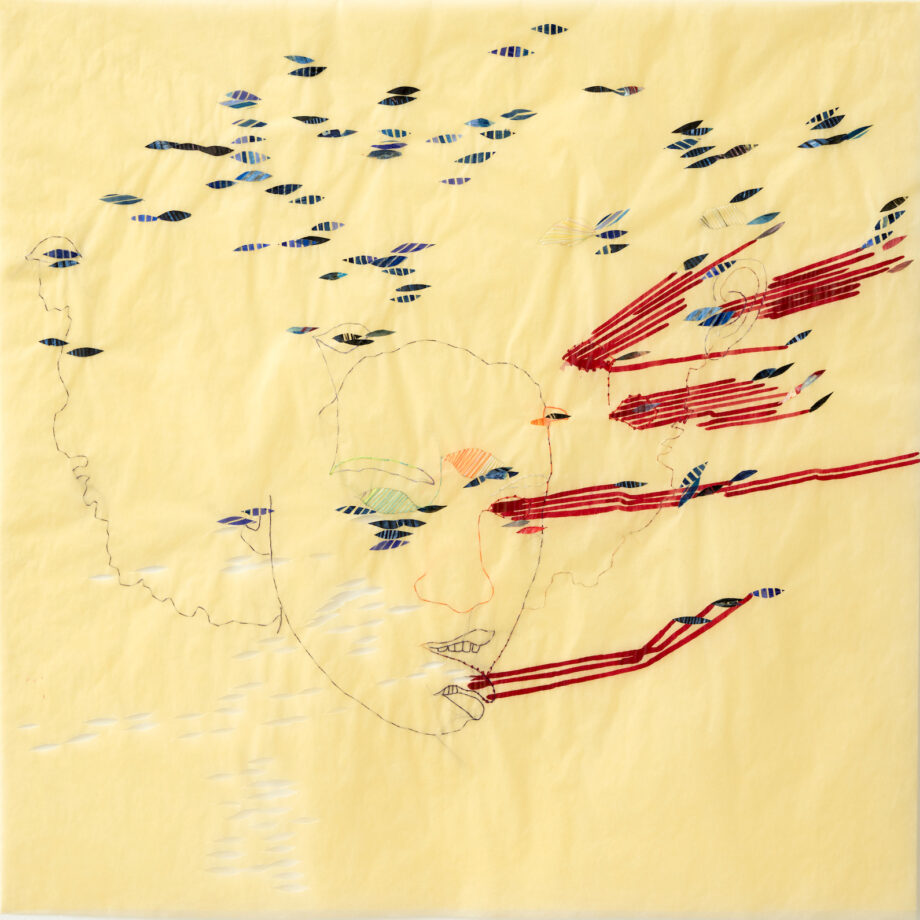


DV: I only moved to Lagos less than two years ago, and it has changed me as a person and a writer. What does Lagos ‘do’ for you?
WO: It permits me to be angry because now I can be angry, but I can also admit to my folly with an apology. So, it is permission to just be human. It’s great and sometimes disturbing. You can always find isolation when you want to or community when you need to. I have become way more comfortable with people being expressive. Here, being open and loud is just part of the culture. It will take a lot of commotion on the street to make me look these days.
DV: What about the art scene in Lagos?
WO: I think it’s very conservative. It’s heavily focused on painting and sculpture and, of course, profit. We don’t have any revolutionary, radical art scene going on here. And part of that is because collectors drive things, unfortunately. And so you don’t see much work based on ideas, concepts, or political perspectives. Some, but not a lot. The city’s exciting, but I don’t think the art scene reflects that which is weird to me because Nigerians are incredibly innovative.
DV: Let’s look at your artistry. Threads are integral to your practice. Where do they come in?
WO: I’ve always really loved threads. I love the look of painting threads, especially synthetic threads. They have this shine that I love. So, I started sewing on paper in 2003. I liked the juxtaposition of the paper and the thread. It is so sculptural to me whilst remaining two-dimensional. Over time, that has expanded, and I now use thread as a material on its own. Like this hanging piece. [She gestures to the threads hanging across the ceiling]. I struggled with it because I didn’t want it to feel overdetermined, and I didn’t want the text to overtake the image. But I think that there’s a nice balance. It’s almost like poetry or something. Words can be so deterministic, so I use them very carefully. It is a very delicate balance, but I am interested in that balance in itself.
DV: Your hour-long performance of ‘Happy’ is included as part of this exhibition. When did you first begin to include performance art in your practice?
WO: For my thesis project, in graduate school, I did a piece that was like a ritual. I wanted to make the installation and my interaction with it part of the exhibition. It was called Before The Tree of Forgetfulness. In Yoruba cosmology, there’s this idea that you choose your destiny before you’re born. So you choose your parents, your profession, your birthday, etc. And then, right before you’re born, you touch the tree of forgetfulness. And then you are born with no memory, so you don’t go crazy. So then, you have these fixed marks of destiny, but you can also change your destiny. You can make different kinds of choices. I was interested in the knowledge we carry in our bodies, cellular memory, ancestral memory, and bodily memory. And so I made this structure that I wove myself into.
DV: Performance art requires a lot of strength. Physically and mentally. What is the source of your strength?
I’ve always felt really strong. As a kid, I could run fast, but at the same time, I had this feeling of invisibility in the US, being a black kid growing up in white neighbourhoods. My body was a place of comfort and strength. I think that’s why paintings feel so free to me because I feel like I can just move with them, and I don’t have to filter my thoughts or my voice. I can just do the thing, knowing it’s really good. I know that it’s strong, I know that it’s beautiful. And even if it’s not, it feels important and in perpetual motion.
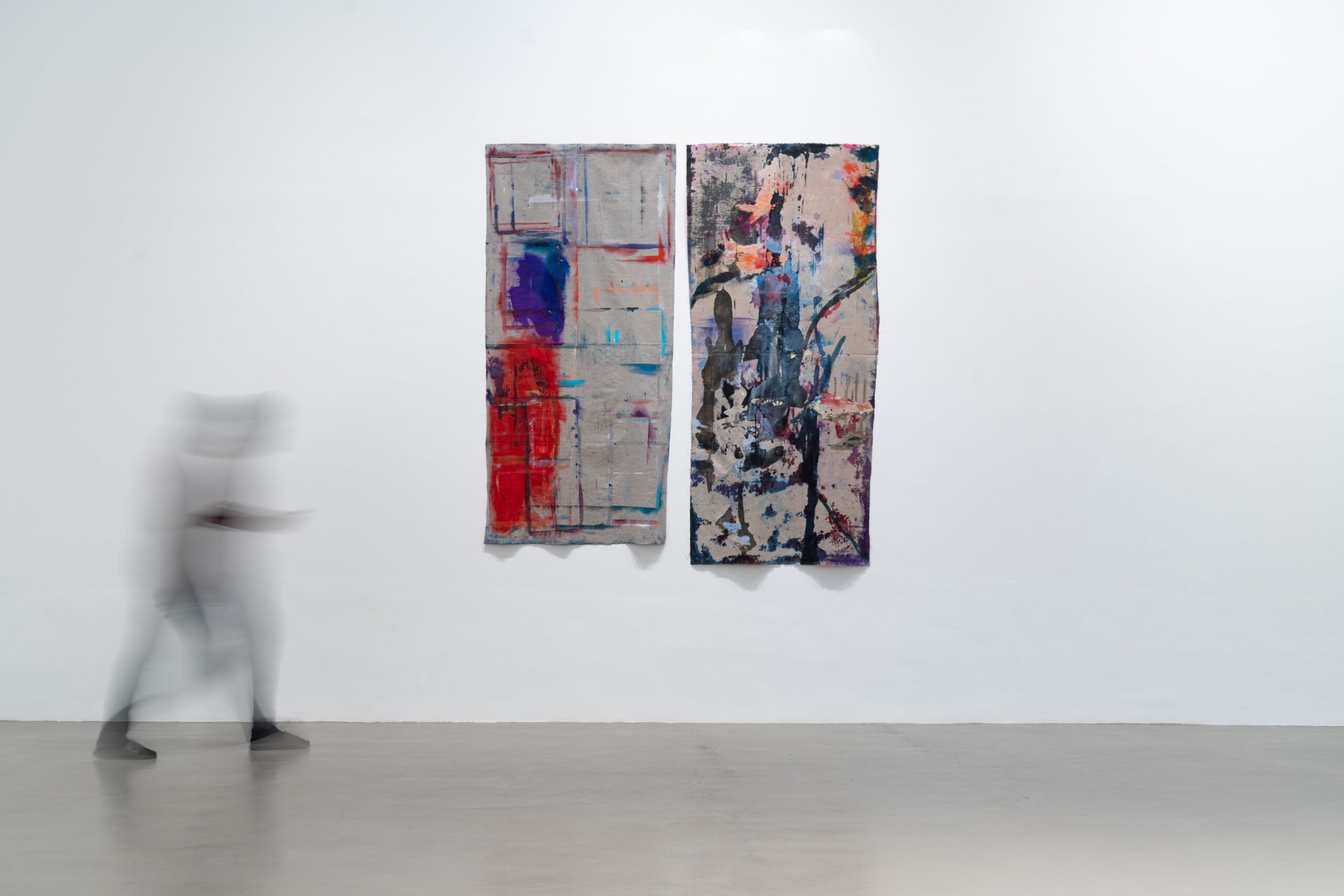
DV: One of my absolute favorite things you have done is ‘Strut’, your 2019 street perofmance that saw five women marching through the streets of Lagos changing outfits at different junctions. What was the inspiration of that particular piece?
WO: I wanted women to feel free and have this sort of frivolous feeling of walking through the streets and wearing these costumes that change and have this experience of freedom that didn’t involve labour. That is something I have kept in mind while working on the performances that I’m doing for this exhibition. They are more compressed in some ways. So what happens if I just perform alone? Or if the performance is more compressed in terms of time and terms of the body. When you’re moving in a group through the streets, you’re sort of taking up this public space, but could you have the same impact by just standing in one place?
DV: How have you brought that into Lalaha, that desire to deconstruct and reshape how we interact with the art?
WO: Part of the structure of the show is that it’s changing every week because new work comes in and moves out, and paintings are going to move up the wall. There will be constant moving and changing in order to create this feeling of dynamism and rawness, which mimics the artist’s studio or a creative person’s mind. One minute, something will be here, and then it will be gone. Sometimes, in the studio, things will be taped to the wall for just a moment and then removed. I think there is a real depth to this and a realness that I hope makes people feel like they have been invited into the actual process of making. This piece is called Two Figures Standing in an Embrace. I was thinking about the artwork and the audience in an embrace. The artwork is doing something for you, and you are doing something for it. You’re bringing it to life, and it’s bringing you to life. There’s this exchange.
Written by Desmond Vincent
